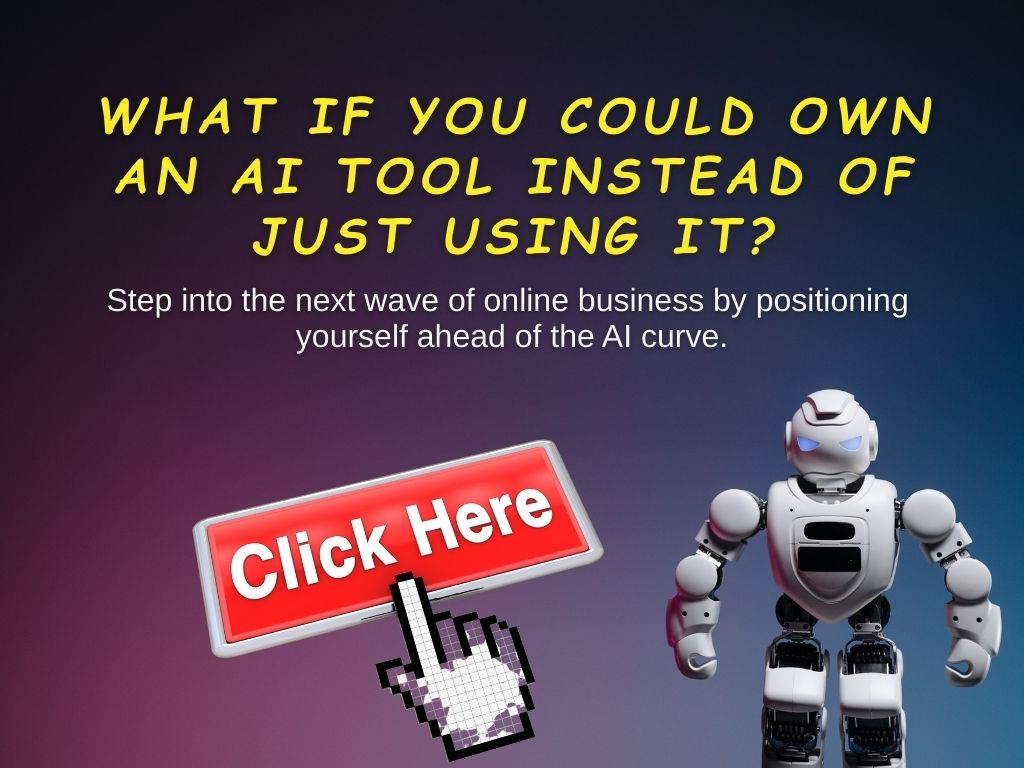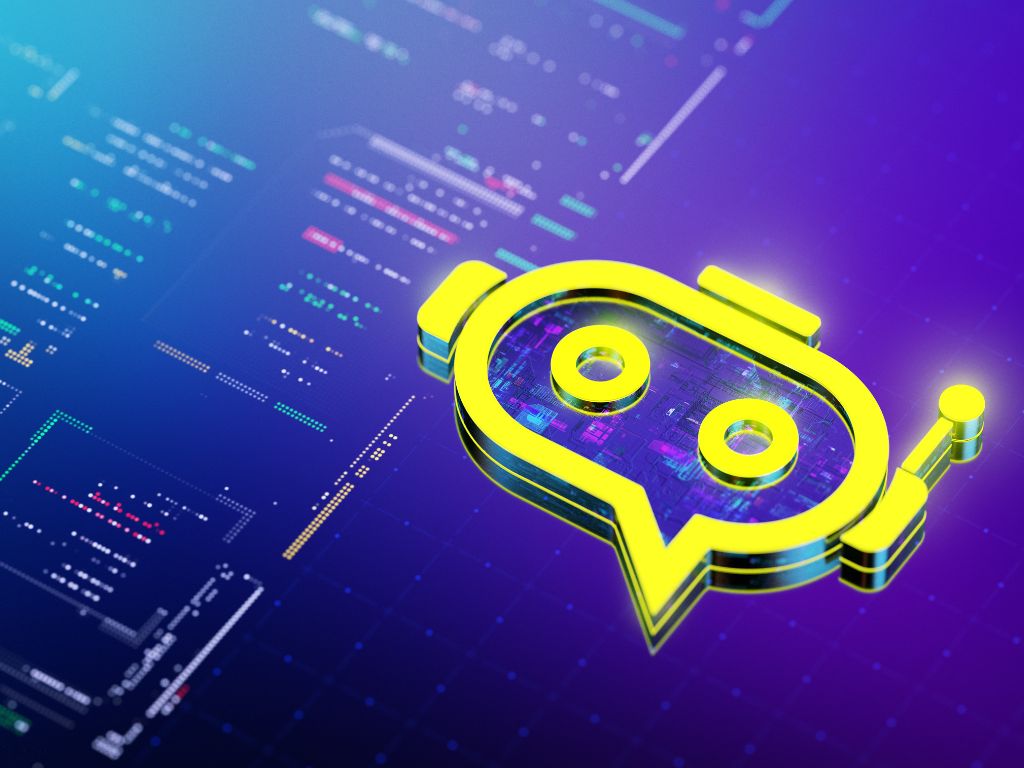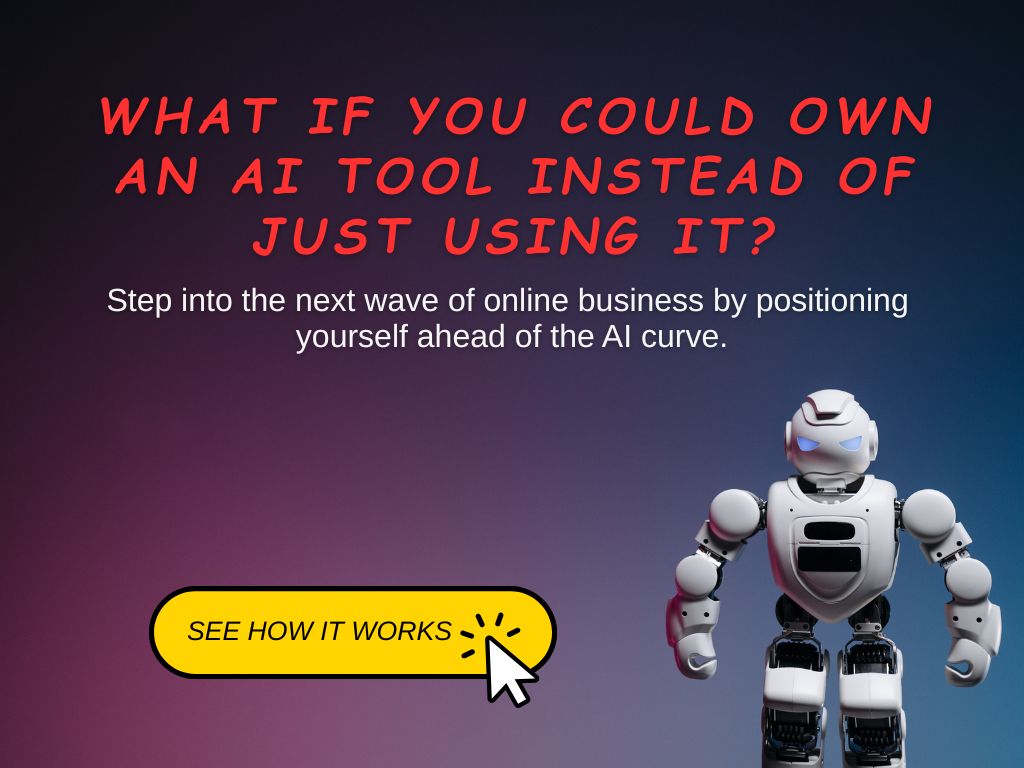50+ Creative GPT Ideas to Supercharge Your Productivity
Introduction: Beyond Basic Prompts – Why GPT is Your Productivity Game-Changer
Struggling to harness the true power of AI for your daily tasks? This comprehensive guide unveils over 50 unique and creative GPT ideas specifically designed to supercharge your productivity. Dive in to discover how to automate tedious work, unlock creative potential, streamline complex processes, and reclaim valuable time, transforming the way you work and achieve your goals.
In today’s fast-paced world, where information overwhelms and demands multiply, finding an edge in productivity isn’t just a luxury – it’s a necessity. We’re constantly seeking ways to streamline our workflows, automate repetitive tasks, and free up mental bandwidth for what truly matters: creativity, strategy, and deep work.
Enter GPT. You’ve likely dabbled with it, perhaps asking for quick definitions, email drafts, or even a simple joke. And while it excels at these basic interactions, that’s merely scratching the surface of its transformative power. Thinking of GPT as just a sophisticated chatbot is like using a high-performance sports car solely for grocery runs – it gets the job done, but you’re missing out on its true potential.
This isn’t about crafting perfect, complex ‘super prompts’ (though those have their place). Instead, it’s about shifting your mindset. It’s about viewing GPT not just as an answer engine, but as an intelligent co-pilot, a creative catalyst, and a dynamic problem-solver that can radically reshape how you approach your daily tasks. When you move beyond the obvious, when you start to think creatively about how this AI can augment your abilities, that’s when the magic happens.
Are you ready to transcend the ordinary and turn your AI interactions into genuine productivity superpowers? This guide is designed to help you do exactly that, offering over 50 innovative ways to leverage GPT to not just get more done, but to do it smarter, faster, and with far less friction.

Igniting Creativity & Streamlining Content Creation
Moving beyond the foundational uses, GPT truly shines as an invaluable partner in the realm of creativity and content generation. It’s no longer about waiting for inspiration to strike; it’s about actively collaborating with an AI that can spark new ideas, dismantle writer’s block, and accelerate your content pipeline from concept to completion. Think of it as having an endlessly patient, incredibly knowledgeable co-author always ready to lend a hand.
Whether you’re a blogger, marketer, student, or just someone looking to articulate ideas more effectively, GPT can transform your creative process. It excels at generating diverse perspectives, exploring tangential thoughts, and providing a launchpad for your unique voice. This isn’t about letting AI write for you, but rather enabling it to write with you, amplifying your output and refining your message.
Here’s how GPT can become your ultimate creative and content creation ally:
- Brainstorming & Idea Generation: Stuck for a topic or a fresh angle? Prompt GPT to generate a list of blog post ideas, social media campaigns, video concepts, or even product names based on a theme or keyword. It can help you explore niche topics you might not have considered.
- Overcoming Writer’s Block: When the words just won’t come, ask GPT for an opening paragraph, a few bullet points to get started, or even a different perspective on your topic. It can provide the necessary nudge to restart your flow.
- Content Outlining & Structuring: Provide your main topic and ask GPT to create a detailed outline for an article, a presentation, or a research paper, complete with main sections and sub-points. This saves immense time in the planning phase.
- Drafting Initial Content: From emails and social media captions to blog post sections and even script snippets, GPT can quickly generate first drafts. You then have a solid foundation to edit, refine, and infuse with your personal touch, rather than starting from a blank page.
- Repurposing Content Across Platforms: Turn a long-form blog post into a series of Twitter threads, LinkedIn updates, Instagram captions, or even a short video script. GPT can condense, expand, and reformat your content to suit various platforms and audiences.
- Tone & Style Adjustment: Need to rewrite a formal report into a more casual, engaging blog post? Or perhaps adapt a sales pitch for a technical audience? GPT can adjust the tone, complexity, and style of your writing to match specific reader demographics or communication goals.
- Headline & Hook Generation: Crafting compelling headlines and attention-grabbing intros is crucial. Ask GPT to generate multiple options for titles, taglines, or opening sentences that hook your audience and improve click-through rates.
- Summarization & Condensation: Quickly distill lengthy articles, research papers, or meeting transcripts into concise summaries or key takeaways. This is invaluable for research, learning, and sharing information efficiently.
- Call-to-Action (CTA) Creation: Struggling to craft an effective CTA? Provide your content and desired outcome, and GPT can suggest various calls to action that encourage engagement, sign-ups, or purchases.
Accelerating Research, Learning & Information Synthesis
In an age where information is abundant but time is scarce, navigating the vast seas of data for research and learning can feel like an overwhelming task. Whether you’re a student sifting through academic papers, a professional needing to quickly grasp a new industry trend, or simply a curious mind seeking to deepen your understanding, GPT can become your ultimate knowledge accelerator. It’s like having a hyper-efficient research assistant and a patient, all-knowing tutor rolled into one, helping you cut through the noise and synthesize insights faster than ever before.
Here’s how GPT can revolutionize your approach to acquiring and processing information:
- Rapid Literature Review & Information Extraction: Instead of manually scanning dozens of articles, feed GPT abstracts or even full texts and ask it to identify key arguments, methodologies, findings, or specific data points. This significantly speeds up the initial information gathering phase for essays, reports, or market research.
- Simplifying Complex Concepts: Struggling with a dense scientific theory, a convoluted economic principle, or intricate historical events? Ask GPT to explain it to you in simple terms, using analogies, or even to a specific audience (e.g., “explain quantum physics to a 10-year-old”). This helps demystify challenging subjects.
- Targeted Question Answering: Need a quick answer to a specific question without sifting through entire articles? Pose your query to GPT. It can rapidly pull relevant information, saving you time usually spent on targeted web searches and reading.
- Generating Study Guides & Flashcards: Provide a chapter, a set of notes, or a topic, and ask GPT to generate summary points, potential exam questions, or even a list of flashcards with definitions and examples. This transforms passive reading into active learning.
- Creating Glossaries & Explaining Jargon: When encountering industry-specific terminology or technical jargon, ask GPT to create a glossary of terms from a given text or explain individual words in context. Essential for breaking down barriers to understanding.
- Identifying Key Arguments & Counterarguments: For debates, persuasive essays, or strategic planning, ask GPT to outline the main arguments for and against a particular topic or proposal, providing a balanced overview and different perspectives.
- Summarizing Meetings & Transcripts: Upload meeting notes or transcriptions and have GPT distill them into concise summaries, action items, or key decisions. This ensures everyone is on the same page and follow-ups are clear.
- Exploring Related Topics & Sub-fields: If you’re researching a broad subject, ask GPT to suggest related sub-topics, influential figures, or tangential areas of study that could deepen your understanding or lead to new research avenues.
- Curating Learning Paths & Resources: Looking to learn a new skill or delve into a new field? Ask GPT to suggest a structured learning path, including recommended books, courses, or online resources, tailored to your current knowledge level.
- Cross-Referencing & Fact-Checking (with caution): While GPT can provide information, always verify critical facts with authoritative sources. However, it can be a useful tool for quickly cross-referencing information it provides against your existing knowledge or other quick checks.

GPT Ideas for Creativity & Content Creation
| Idea / Use Case | How GPT Helps |
|---|---|
| Brainstorming & Idea Generation | Generates fresh angles, blog topics, campaign ideas, product names, and niche explorations. |
| Overcoming Writer’s Block | Provides opening paragraphs, bullet points, or new perspectives to restart creative flow. |
| Content Outlining & Structuring | Builds detailed outlines for articles, presentations, or papers, saving time in planning. |
| Drafting Initial Content | Produces first drafts of blogs, emails, scripts, or captions for you to refine. |
| Repurposing Content Across Platforms | Condenses, expands, and reformats content into tweets, LinkedIn posts, captions, or video scripts. |
| Tone & Style Adjustment | Rewrites content to match audience needs (formal, casual, technical, persuasive, etc.). |
| Headline & Hook Generation | Suggests multiple catchy titles, taglines, or intros to grab attention. |
| Summarization & Condensation | Distills long articles, reports, or transcripts into concise summaries. |
| Call-to-Action (CTA) Creation | Suggests compelling CTAs that drive clicks, sign-ups, or sales. |

Revolutionizing Organization, Planning & Project Management
In the whirlwind of daily tasks, meetings, and deadlines, staying organized and managing projects effectively can feel like an uphill battle. The administrative burden of planning, tracking, and coordinating often eats into the precious time needed for actual execution.
But what if you had an intelligent assistant capable of transforming this chaos into calm, and complex projects into manageable steps? GPT steps in as your ultimate organizational and project management co-pilot, streamlining processes, enhancing clarity, and freeing you to focus on strategic oversight and impactful work.
Here’s how GPT can revolutionize your approach to acquiring and processing information:
- Intelligent Task Breakdown & Prioritization: Instead of staring at a daunting project, feed it to GPT and ask it to break it down into smaller, actionable tasks. You can even ask it to suggest priorities based on urgency, importance, or dependencies, helping you create clear, manageable to-do lists for yourself or your team.
- Streamlined Meeting Management: From crafting detailed agendas that ensure productive discussions to summarizing lengthy meeting transcripts into concise minutes with identified action items and owners, GPT can handle the administrative heavy lifting. It ensures clarity and accountability long after the meeting concludes.
- Project Planning & Phasing: Outline your project goals and ask GPT to suggest logical phases, key milestones, and potential dependencies. It can help you visualize the entire project lifecycle, identify potential roadblocks early, and structure your approach more effectively.
- Efficient Communication & Updates: Draft project updates, team announcements, or stakeholder reports with GPT’s help. It can adapt the message for different audiences, ensuring clarity, conciseness, and consistent communication across all project stakeholders.
- Proactive Problem Solving & Risk Identification: When facing a challenge or planning a new initiative, prompt GPT to brainstorm potential obstacles, identify risks, and suggest mitigation strategies. This foresight can save significant time and resources down the line.
- Goal Setting & Action Planning: Define your high-level goals, and GPT can help you refine them into SMART (Specific, Measurable, Achievable, Relevant, Time-bound) objectives. It can then assist in mapping out the concrete steps and sub-goals required to achieve them.
- Optimizing Schedules & Routines: Describe your daily or weekly commitments and ask GPT to suggest an optimized schedule, identify potential time blocks for focused work, or even propose routines that align with your energy levels and priorities.
- Automated Documentation & Knowledge Management: Turn raw notes into structured documents, create clear process guides, or organize disparate pieces of information into a cohesive knowledge base. GPT can help categorize, summarize, and format information, making it easier to find and utilize later.
- Personal Productivity Hacks: Beyond work, GPT can assist with personal organization. Ask it to generate a weekly meal plan based on dietary preferences, create a packing list for a trip, or even help you outline a personal development plan.
By offloading the repetitive, time-consuming aspects of organization and planning to GPT, you free up your valuable cognitive resources. This shift allows you to move from being reactive to proactive, from administrative burden to strategic leadership, ultimately enhancing not just your productivity, but your overall effectiveness and peace of mind.
GPT Ideas for Research, Learning & Information Synthesis
| Idea / Use Case | How GPT Helps |
|---|---|
| Rapid Literature Review & Extraction | Scans abstracts or full texts to pull out key findings, methods, or arguments. |
| Simplifying Complex Concepts | Explains dense theories or principles in simple terms, analogies, or tailored to a specific audience. |
| Targeted Question Answering | Provides quick, direct answers without needing to read entire sources. |
| Generating Study Guides & Flashcards | Creates summaries, test questions, or flashcards from notes or chapters. |
| Creating Glossaries & Explaining Jargon | Defines technical terms or builds glossaries from a text. |
| Identifying Key Arguments & Counterarguments | Outlines both sides of a debate or topic for balanced understanding. |
| Summarizing Meetings & Transcripts | Condenses raw notes into action items, decisions, and key takeaways. |
| Exploring Related Topics & Sub-fields | Suggests tangential subjects, experts, or niche areas to expand your research. |
| Curating Learning Paths & Resources | Builds structured learning plans with books, courses, and resources. |
| Cross-Referencing & Fact-Checking | Assists in verifying or comparing data (with the caveat to double-check against authoritative sources). |

Automating Tasks & Optimizing Workflows for Peak Efficiency
The dream of automation isn’t just for tech giants with complex systems. With GPT, it’s accessible to everyone, transforming tedious, repetitive tasks into seamless, efficient processes. Imagine reclaiming hours spent on administrative chores, data handling, or routine communications.
GPT acts as your personal efficiency engineer, helping you identify bottlenecks, design smarter workflows, and even generate the basic code or instructions needed to automate key parts of your day. This isn’t about replacing human judgment, but about offloading the mundane to free up your cognitive energy for higher-value activities.
Here’s how GPT can help you automate and optimize your workflows for peak efficiency:
- Generating Simple Scripts & Formulas: Need a quick Excel formula, a basic Python script for data processing, or a regex pattern? Describe your need, and GPT can often generate the exact syntax you require, saving you time searching or debugging.
- Automating Email Responses & Templates: Beyond initial drafts, leverage GPT to create a library of intelligent email templates for common inquiries, customer support, or internal communications, ensuring consistency and rapid responses.
- Data Transformation Instructions: Instead of manually cleaning or reformatting data, describe your desired outcome and ask GPT for step-by-step instructions or even code snippets (e.g., for Pandas, R, or Excel Power Query) to transform your datasets efficiently.
- Formulating Database Queries: For those who work with data, GPT can translate natural language requests into precise SQL queries, making data extraction and analysis faster and more accessible, even without deep coding knowledge.
- Creating Standard Operating Procedures (SOPs): Documenting processes is vital but often tedious. Provide GPT with the high-level steps, and it can help flesh out detailed, clear, and actionable SOPs, ensuring consistency and ease of onboarding.
- Developing Checklists & Workflows: For repetitive tasks, project launches, or onboarding new team members, ask GPT to generate comprehensive checklists or step-by-step workflows, minimizing errors and ensuring all necessary actions are taken.
- Troubleshooting & Debugging Assistance: Describe a technical issue or an error message, and GPT can often suggest potential causes, provide diagnostic steps, or even suggest code fixes, accelerating problem resolution and reducing downtime.
- Routine Report Generation (Drafts): For recurring reports that pull from structured data, GPT can help draft narrative sections, summarize key findings, or even suggest automated data visualization descriptions, significantly speeding up your reporting cycle.
- Cross-Platform Content Adaptation (for automation tools): Beyond direct content creation, GPT can help you format content specifically for automation tools like Zapier or Make, ensuring seamless integration and data flow between different applications and services.
GPT Ideas for Organization, Planning & Project Management
| Idea / Use Case | How GPT Helps |
|---|---|
| Intelligent Task Breakdown & Prioritization | Splits large projects into smaller steps, suggests task order based on urgency or dependencies. |
| Streamlined Meeting Management | Drafts agendas, summarizes transcripts, and extracts action items with assigned owners. |
| Project Planning & Phasing | Maps out milestones, dependencies, and timelines for more effective planning. |
| Efficient Communication & Updates | Drafts tailored updates for teams, clients, or stakeholders. |
| Proactive Problem Solving & Risk Identification | Brainstorms possible roadblocks and suggests mitigation strategies. |
| Goal Setting & Action Planning | Turns high-level goals into SMART objectives with clear sub-steps. |
| Optimizing Schedules & Routines | Designs daily/weekly schedules that align with energy levels and priorities. |
| Automated Documentation & Knowledge Management | Converts raw notes into structured guides, process docs, or searchable knowledge bases. |
| Personal Productivity Hacks | Helps with non-work tasks like meal plans, packing lists, or personal projects. |

Enhancing Problem-Solving & Fostering Innovative Thinking
Beyond the realms of content creation and administrative efficiency, GPT truly shines as an unparalleled partner in the intricate dance of problem-solving and the pursuit of innovation. When faced with a complex challenge, a creative block, or the need to think outside the box, GPT transforms from a mere answer engine into a dynamic thought partner.
It can help you dissect issues, explore diverse perspectives, and generate novel solutions that might otherwise remain undiscovered. This isn’t about GPT solving your problems for you, but empowering you to solve them more effectively, strategically, and creatively.
Here’s how GPT can supercharge your problem-solving prowess and foster groundbreaking ideas:
- Structured Problem Decomposition: Faced with an overwhelming problem? Ask GPT to help you break it down into smaller, more manageable components. It can identify sub-problems, dependencies, and key variables, making complex issues less daunting and easier to tackle systematically.
- Multi-Perspective Solution Brainstorming: When you’re stuck on a single approach, prompt GPT to generate a wide array of potential solutions from various angles. Ask it to think like a specific expert (e.g., “how would an engineer solve this?” or “what’s the marketing angle here?”), or even a fictional character, to unlock truly diverse ideas.
- Root Cause Identification: Employ GPT to conduct a “5 Whys” analysis or similar root cause exploration. By repeatedly asking “why” a problem exists or a symptom appears, GPT can help you dig past superficial issues to uncover the underlying systemic causes.
- Scenario Analysis & Forecasting: For strategic planning or risk assessment, ask GPT to outline different potential future scenarios based on current trends or proposed actions. It can help you explore “what-if” situations, identify potential opportunities, and anticipate challenges, allowing for proactive planning.
- Challenging Assumptions & Cognitive Biases: We all operate with inherent biases. Use GPT as a devil’s advocate or a neutral observer. Present your problem or proposed solution and ask GPT to challenge your assumptions, point out potential flaws, or suggest alternative interpretations, helping you overcome mental blind spots.
- Strategic Framework Application: Leverage GPT to apply classic strategic frameworks to your situation. Ask it to conduct a SWOT analysis (Strengths, Weaknesses, Opportunities, Threats), PESTLE analysis (Political, Economic, Social, Technological, Legal, Environmental), or even Porter’s Five Forces for competitive analysis, providing a structured approach to understanding complex environments.
- Decision Support & Evaluation: When weighing options, provide GPT with your criteria and the alternatives. It can help you create a decision matrix, list pros and cons for each choice, or even suggest additional factors to consider, facilitating a more informed and objective decision-making process.
- Lateral Thinking & Analogies: For truly innovative breakthroughs, GPT can help you connect seemingly unrelated concepts. Ask it to draw analogies from different industries or fields to your problem, stimulating lateral thinking and inspiring novel solutions that wouldn’t emerge from linear thought.
- Innovation Catalyst for Products & Services: Beyond content, GPT can be a powerful engine for product development. Describe a market need or an existing product, and ask GPT to brainstorm new features, service enhancements, pricing models, or entirely new product concepts, pushing the boundaries of what’s possible.
By engaging GPT as a dynamic co-thinker, you’re not just getting answers; you’re expanding your cognitive toolkit. It allows you to approach challenges with greater clarity, explore possibilities with unprecedented breadth, and ultimately, arrive at more robust and innovative solutions.
GPT Ideas for Automation & Workflow Optimization
| Idea / Use Case | How GPT Helps |
|---|---|
| Generating Simple Scripts & Formulas | Writes Excel formulas, regex patterns, or basic Python scripts. |
| Automating Email Responses & Templates | Creates reusable templates for customer support or internal comms. |
| Data Transformation Instructions | Provides step-by-step methods or code to clean/reformat datasets. |
| Formulating Database Queries | Translates natural language into SQL queries for fast data access. |
| Creating Standard Operating Procedures (SOPs) | Expands rough steps into detailed process documents. |
| Developing Checklists & Workflows | Designs repeatable task checklists for launches, onboarding, or recurring projects. |
| Troubleshooting & Debugging Assistance | Suggests fixes or diagnostic steps for technical issues. |
| Routine Report Generation (Drafts) | Summarizes structured data into written report drafts. |
| Cross-Platform Content Adaptation | Reformats content for automation tools like Zapier or Make. |

GPT for Personal Growth & Professional Advancement
Beyond the immediate gains in daily tasks, GPT offers a profound opportunity for self-improvement and career acceleration. Think of it as having an endlessly patient, incredibly knowledgeable personal coach, mentor, and learning assistant, always on standby.
In a world that demands continuous learning and adaptability, GPT can become your secret weapon for unlocking new potentials, refining existing strengths, and navigating your professional journey with greater clarity and confidence.
Here’s how GPT can become your ultimate ally in personal growth and professional advancement:
- Personalized Learning & Skill Development: Want to pick up a new programming language, understand a complex economic theory, or master a new marketing strategy? Ask GPT to create a personalized learning roadmap, explain concepts in simple terms, or generate practice exercises. It can tailor the learning experience to your pace and style, making complex topics accessible.
- Career Path Exploration & Planning: Unsure about your next career move? Describe your skills, interests, and aspirations, and GPT can suggest potential career paths, industries to explore, or even skills gaps you might need to address. It can act as a neutral sounding board for your professional ambitions, offering new perspectives.
- Resume, Cover Letter & LinkedIn Optimization: Crafting compelling professional documents is crucial. Provide GPT with a job description and your experience, and it can help you tailor your resume and cover letter to highlight relevant skills, optimize keywords for applicant tracking systems (ATS), and refine your LinkedIn profile for maximum impact.
- Interview Preparation & Mock Scenarios: Get ready for that big interview by having GPT act as your interviewer. Ask it to generate common interview questions, behavioral questions, or even role-specific queries. You can practice your answers, get feedback on structure, and refine your responses for confidence and clarity.
- Communication & Public Speaking Enhancement: Whether it’s drafting a difficult email, outlining a persuasive presentation, or refining your speaking points, GPT can help you articulate your thoughts clearly and effectively. Practice explaining complex ideas, and get suggestions for improving clarity, conciseness, and impact in any communication.
- Goal Setting & Accountability Partner: Define your personal or professional goals, and GPT can help you break them down into SMART (Specific, Measurable, Achievable, Relevant, Time-bound) objectives, suggest actionable steps, and even prompt you with questions to reflect on your progress or identify obstacles. While it can’t hold you truly accountable, it provides structured support for your self-discipline.
- Networking & Professional Outreach: Crafting initial outreach messages, follow-up emails, or even conversation starters for networking events can be daunting. GPT can help you draft personalized, professional messages that build rapport and open doors to valuable connections, making networking less intimidating.
- Emotional Intelligence & Self-Awareness: Explore scenarios or reflect on situations by asking GPT to help you identify underlying emotions, understand different perspectives, or brainstorm empathetic responses. It can provide a framework for developing greater self-awareness and social skills by analyzing interactions.
- Personal Finance & Planning: Need help budgeting, understanding investment basics, or planning for a major purchase? GPT can explain financial concepts, suggest budgeting categories, or help you outline a savings plan based on your income and goals. (Always cross-reference with professional financial advice for critical decisions).
- Creative Writing & Personal Expression: Beyond professional content, use GPT to unlock your personal creativity. Brainstorm story plots, write poetry, generate journal prompts for self-reflection, or get ideas for personal projects and hobbies. It’s a boundless source of inspiration for your personal pursuits and creative expression.
By integrating GPT into your personal growth journey, you transform it from a passive tool into an active partner in your continuous evolution. It empowers you to learn faster, plan smarter, communicate more effectively, and ultimately, unlock new levels of achievement and fulfillment, both in your career and in your personal life.
Embrace GPT not just as a productivity hack, but as a catalyst for becoming the best version of yourself.
GPT Ideas for Problem-Solving & Innovation
| Idea / Use Case | How GPT Helps |
|---|---|
| Structured Problem Decomposition | Breaks complex issues into smaller, manageable sub-problems. |
| Multi-Perspective Solution Brainstorming | Generates solutions from different angles or expert viewpoints. |
| Root Cause Identification (“5 Whys”) | Guides analysis to uncover underlying systemic issues. |
| Scenario Analysis & Forecasting | Outlines potential “what-if” scenarios for strategy or risk planning. |
| Challenging Assumptions & Biases | Acts as a devil’s advocate, spotting blind spots or flawed reasoning. |
| Strategic Framework Application | Applies SWOT, PESTLE, or Porter’s Five Forces to problems. |
| Decision Support & Evaluation | Builds decision matrices, lists pros/cons, or suggests extra criteria. |
| Lateral Thinking & Analogies | Connects unrelated concepts to spark fresh, innovative ideas. |
| Innovation Catalyst for Products/Services | Brainstorms new features, pricing models, or product concepts. |

Pro Tips: Maximizing Your GPT Productivity & Avoiding Pitfalls
Unlocking GPT’s Full Potential: Strategies for Maximum Output
Moving beyond basic queries, true GPT mastery lies in your approach. Think of it as learning to drive a race car instead of a golf cart. Here’s how to get the most out of your AI co-pilot:
- Be Specific, Clear, and Contextual: The more precise your instructions, the better the output. Instead of “Write an email,” try “Write a concise, professional email to John Doe informing him that the Q3 report is delayed by two days, due to unexpected data processing issues. Apologize for the inconvenience and state the new delivery date is Friday.” Provide background information if necessary.
- Define Roles and Personas: Tell GPT who it should be or who its audience is. “Act as a seasoned marketing strategist,” or “Explain this concept to a non-technical CEO,” or “Write this in the tone of a friendly, approachable mentor.” This significantly refines the output’s style and focus.
- Iterate and Refine: Don’t expect perfection on the first try. GPT is a conversational AI. Use follow-up prompts to refine, expand, or correct. “Make it shorter,” “Elaborate on point #3,” “Rewrite this paragraph to be more persuasive,” or “Give me three more options for the headline.”
- Chain Your Prompts (Multi-Turn Conversations): Break down complex tasks into smaller, sequential steps. First, ask GPT to brainstorm ideas. Then, ask it to outline one of those ideas. Next, have it draft a section of the outline. This allows for deeper, more focused work.
- Provide Examples (Few-Shot Prompting): If you have a specific style or format in mind, show GPT what you want. “Here are three examples of headlines I like: [Example 1], [Example 2], [Example 3]. Generate five more in a similar style for my blog post about AI.”
- Specify Output Format: Clearly state how you want the information presented. “Provide the answer as a bulleted list,” “Summarize in a table with columns for ‘Pro’ and ‘Con’,” “Write a 500-word essay,” or “Format as a JSON object.”
- Leverage Custom Instructions/GPTs (Where Available): Many platforms (like ChatGPT Plus) allow you to set “Custom Instructions” that GPT remembers across conversations. Use these for your preferred tone, writing style, or default persona. If custom GPTs are available, explore or create specialized versions for recurring tasks.
- Encourage Creativity or Constraint: Depending on your need, explicitly ask for “out-of-the-box ideas” or conversely, “stay strictly within these parameters.” This guides GPT’s creative freedom.
Navigating the Treacherous Waters: Common Pitfalls to Avoid
While GPT is powerful, it’s not infallible. Being aware of its limitations will save you time and prevent missteps:
- The “Hallucination” Trap (Inaccuracy): GPT can confidently present false information as fact. Always verify critical information, especially statistics, dates, names, or technical details, with authoritative sources. Never blindly trust its output for factual accuracy.
- Bias in Output: AI models are trained on vast datasets, which inherently contain human biases. GPT’s responses can sometimes reflect these biases (e.g., gender, racial, cultural stereotypes). Be mindful and critically evaluate output for fairness and inclusivity.
- Over-Reliance & Loss of Critical Thinking: GPT is a tool, not a replacement for your brain. Don’t let it diminish your own critical thinking, creativity, or problem-solving skills. Use it to augment, not to outsource, your intelligence.
- Information Overload: Sometimes GPT generates too much information or goes off-topic. Be ready to use follow-up prompts like “Condense this,” “Focus only on X,” or “Ignore Y.”
- Privacy and Sensitive Data: Never input highly sensitive, confidential, or proprietary information into public GPT models. Assume anything you input could potentially be used for training or exposed. Check the privacy policies of the specific AI service you are using.
- “Prompt Fatigue” or Over-Engineering: While specificity is key, don’t get bogged down in crafting excessively long or complex prompts for simple tasks. Find a balance; sometimes a short, clear prompt is all you need.
- Lack of Real-World Understanding: GPT doesn’t “understand” in the human sense. It predicts the next most probable word. It lacks real-world experience, empathy, or common sense, which can lead to impractical or nonsensical suggestions in complex, nuanced situations.
By understanding both the immense capabilities and the inherent limitations of GPT, you can wield this powerful technology responsibly and effectively, truly transforming your productivity and innovative capacity.
GPT Ideas for Personal Growth & Professional Advancement
| Idea / Use Case | How GPT Helps |
|---|---|
| Personalized Learning & Skill Development | Creates learning roadmaps, explains concepts, generates practice exercises. |
| Career Path Exploration & Planning | Suggests career paths, industries, and skills gaps based on your profile. |
| Resume, Cover Letter & LinkedIn Optimization | Tailors documents to job descriptions, optimizes keywords, and improves presentation. |
| Interview Preparation & Mock Scenarios | Simulates interview questions and allows practice responses. |
| Communication & Public Speaking Enhancement | Refines emails, presentations, and speech points for clarity and impact. |
| Goal Setting & Accountability Partner | Breaks down goals into SMART objectives and suggests progress steps. |
| Networking & Professional Outreach | Drafts outreach emails, follow-ups, and conversation starters. |
| Emotional Intelligence & Self-Awareness | Helps identify emotions, explore perspectives, and draft empathetic responses. |
| Personal Finance & Planning | Explains financial concepts, suggests budgets, or outlines savings plans. |
| Creative Writing & Personal Expression | Brainstorms stories, poetry, journaling prompts, or hobby project ideas. |

Your Productivity Unleashed: Embracing the AI Advantage
You’ve just journeyed through a landscape of over 50 innovative ways to integrate GPT into nearly every facet of your productive life. From sparking creative breakthroughs and dismantling writer’s block to streamlining complex research, orchestrating projects with precision, automating tedious tasks, and even serving as your personal growth coach, the scope of GPT’s utility is truly astounding.
This isn’t merely a collection of clever tricks; it’s an invitation to a fundamental shift in how you work and learn. When you embrace GPT not as a simple search engine, but as an intelligent co-pilot deeply integrated into your workflow, you unlock a new dimension of efficiency and effectiveness.
Imagine a world where:
- Cognitive Load is Reduced: The repetitive, the mundane, the initial drafting – much of it can be offloaded, freeing your mind for strategic thinking, creative problem-solving, and truly impactful work.
- Time is Amplified: Hours once spent on administrative tasks, sifting through data, or battling writer’s block are reclaimed, allowing you to focus on what truly moves the needle in your projects and goals.
- Creativity Flourishes: With an endless wellspring of ideas and instant feedback, you can explore concepts faster, iterate more rapidly, and consistently produce higher-quality, more engaging content.
- Learning Accelerates: Complex topics become digestible, research becomes surgical, and new skills are acquired with unprecedented speed and personalized guidance.
- Problems Dissolve Faster: You gain a dynamic thought partner capable of dissecting issues, challenging assumptions, and brainstorming solutions from angles you might never consider alone.
This isn’t about letting AI do your job; it’s about empowering you to do your job better, faster, and with greater joy. It’s about moving beyond simply “getting things done” to thriving in a world that demands continuous adaptability and innovation.
The true magic of GPT isn’t just in the individual prompts, but in the cumulative effect of consistently leveraging its capabilities. Each small automation, every rapid draft, and every insightful summary adds up, creating a compounding advantage that liberates your potential.
So, take these ideas, experiment, and most importantly, start thinking differently. The future of productivity isn’t just about working harder; it’s about working smarter, and with GPT as your trusted ally, your productivity isn’t just enhanced – it’s truly unleashed.
Pro Tips for Maximizing GPT Productivity
| Idea / Use Case | How GPT Helps |
|---|---|
| Be Specific, Clear, and Contextual | Better instructions lead to more accurate and useful outputs. |
| Define Roles and Personas | Improves responses by asking GPT to “act as” an expert or adjust for specific audiences. |
| Iterate and Refine | Use follow-up prompts to adjust, expand, or correct until it fits your needs. |
| Chain Your Prompts (Multi-Turn) | Break down complex tasks step-by-step instead of asking all at once. |
| Provide Examples (Few-Shot Prompting) | Show GPT examples to guide style, tone, or structure. |
| Specify Output Format | Request lists, tables, essays, JSON, etc., for better usability. |
| Leverage Custom Instructions / GPTs | Use built-in customization to set tone, style, and persona defaults. |
| Encourage Creativity or Constraint | Direct GPT to go “out of the box” or stay tightly within rules. |

Common Pitfalls to Avoid (Turned into Actionable Ideas)
| Idea / Use Case | How GPT Helps |
|---|---|
| Verify Critical Facts | Prevent errors by cross-checking GPT’s output with trusted sources. |
| Watch for Bias in Output | Adjust wording or ask GPT to provide balanced viewpoints. |
| Maintain Critical Thinking | Use GPT as support, not a replacement for human judgment. |
| Control Information Overload | Ask GPT to condense, summarize, or stay focused on key points. |
| Protect Privacy | Avoid inputting sensitive data when using GPT. |
| Avoid Prompt Fatigue | Keep prompts clear but not over-engineered for simple tasks. |
| Account for Lack of Real-World Understanding | Reframe or sanity-check GPT’s advice against common sense or experience. |

Frequently Asked Questions (FAQs)
Q1: Do I need to be a tech expert or a “prompt engineer” to use GPT effectively for productivity?
Absolutely not! While the term “prompt engineering” might sound intimidating, this guide shows that effective GPT use is more about a mindset shift than technical wizardry. If you can clearly articulate your needs to another human, you can learn to articulate them to GPT. The key is to be specific, provide context, and be willing to iterate. Start simple, experiment, and you’ll quickly discover powerful ways to integrate GPT into your workflow without needing to write complex code or understand advanced AI concepts.
Q2: Is using GPT for productivity free? What are the costs involved?
Many popular GPT models offer free tiers or trial periods, which are excellent for getting started and exploring their capabilities. For instance, OpenAI’s ChatGPT (the most widely known) has a free version, though it might have limitations on usage or access to the latest models. For more advanced features, higher usage limits, or access to cutting-edge models (like GPT-4), paid subscriptions (e.g., ChatGPT Plus) or API access (where you pay per usage) are typically required. The cost is often a small investment compared to the time savings and productivity gains you can achieve.
Q3: How do I ensure the information GPT provides is accurate and unbiased?
This is a critical question! As highlighted in the ‘Pitfalls’ section, GPT can sometimes “hallucinate” or reflect biases present in its training data. The golden rule is: Always verify critical information. Especially for facts, figures, technical details, or anything that impacts a significant decision, cross-reference GPT’s output with authoritative, trusted sources. For bias, critically evaluate the tone, perspective, and completeness of the response. If something feels off or incomplete, ask GPT to rephrase, provide alternative viewpoints, or explicitly prompt it to consider different perspectives. GPT is a powerful assistant, but your human judgment and critical thinking remain indispensable.
Q4: Can GPT truly understand my unique context, industry, or specific project nuances?
While GPT doesn’t “understand” in the human sense, its ability to process vast amounts of text allows it to infer context remarkably well. The more specific and detailed you are in your prompts about your industry, project, target audience, or desired outcome, the better its output will be. Think of it as providing a highly intelligent intern with a thorough briefing. You might need to refine its initial responses, but with iterative prompting, you can guide it to produce highly relevant and nuanced content tailored to your unique needs. Custom Instructions and specialized GPTs (where available) also help embed your context more deeply.
Q5: Will using GPT for productivity make me less creative or too reliant on AI?
This is a common concern, but our perspective is the opposite: GPT is a catalyst for creativity and a tool for amplifying your abilities, not replacing them. By offloading mundane tasks like initial drafting, brainstorming, or formatting, GPT frees up your mental energy for higher-level creative thinking, strategic planning, and problem-solving. It helps you overcome writer’s block, explore ideas you might not have considered, and iterate faster. The goal isn’t to become reliant on AI, but to leverage it intelligently, allowing you to focus on the unique human elements of your work – empathy, intuition, critical judgment, and truly novel ideas.
Leave a Reply